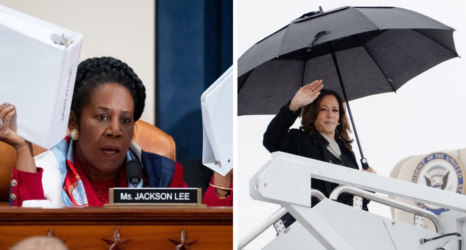Advocates are pressuring the EEOC to reverse a Trump-era order that halted the agency’s collection of gender and racial pay data.

In 1964, President Lyndon Johnson signed the Civil Rights Act, outlawing employment discrimination on the basis of race, sex, color, religion, disability, age and national origin. The legislation established the Equal Employment Opportunity Commission (EEOC) to investigate charges of unlawful discrimination in almost every aspect of employment, including recruitment, hiring, wages, promotions, benefits, discipline and layoffs.
To facilitate its mission, starting in 1966 the EEOC required employers with at least 100 employees or government contractors with 50 or more employees to fill out the EEO-1 Private Sector Report annually, providing a snapshot of the number of racial and ethnic minorities and women working in a company in each job category. The emphasis of early enforcement was on racial desegregation of workplace facilities, most notably restrooms, washrooms, shower and locker rooms, and cafeterias.
Fast-forward to 2016.
Thanks to strong advocacy by women’s groups, the Obama administration announced the EEOC’s historic, first-time addition of pay data to its reporting requirements. Federal contractors and subcontractors, along with private employers with 100 or more employees, had to provide summary pay data by sex and race or ethnicity on the EEO-1 form, meaning individual wages were not disclosed. Compensation would be reported by gender in each job by pay bands (ranges).
For example, a company might report that it employed 15 Black women whose total W-2 earnings for the calendar year were in pay band 5 ($39,000 to $49,919) for the “sales worker” job category.
The first groundbreaking reports that included the new pay data were issued in 2018 and 2019 and represented a giant leap—but it didn’t last. The new requirement was promptly scrapped under President Donald Trump.
The Biden administration is working on the reinstatement and strengthening of it.
We want [the EEOC] to move forward as quickly as possible. Who knows what the political landscape will look like in the future?
Deborah J. Vagins
Deborah J. Vagins is the national campaign director of Equal Rights Advocates, an organization based in San Francisco working on employment discrimination issues nationally. She heads the Equal Pay Today campaign, a coalition of more than 45 national, state and local women’s and civil rights groups leading the charge to get the pay data requirement revived.
Equal Pay Today recently sent a letter to the EEOC signed by its member groups asking for fast action.
“We want [the EEOC] to move forward as quickly as possible,” Vagins told Ms. “Who knows what the political landscape will look like in the future?”
There’s no question that action is needed to narrow gender pay disparities.
- When the EEOC was formed, the pay gap between working women and men was 59 cents on the dollar, according to Equal Pay Today.
- Now it’s 78 cents for all women workers compared to men, and 66 cents for Black women, 52 cents for Latinas and 55 cents for Native women.
The earnings gap is even larger when the value of benefits, including health and life insurance and performance bonuses, is included in the equation.
While the campaign is concentrating on bringing about a change in agency rules, Vagins says individuals can take action as well: “It never hurts to talk to your member of Congress about the importance of enforcement agencies, because it is Congress who helps fund that important work.”
Even if the campaign is successful in getting pay data reinstated in the EEO-1 forms, there is more to be done. Currently the information is used for enforcement purposes only and is not public, though in some cases it may be released by request under the Freedom of Information Act. It would be in the public interest to make the reports openly accessible, at least those from federal contractors. After all, they are receiving taxpayer money. But one step at a time.
Disclosure of pay data by gender and race to the EEOC may pave the way for transparency to the public at large—and much-needed action to close gender and racial pay gaps once and for all.
It’s been 60 years. Isn’t that long enough?
This story originally appeared in the Spring 2024 issue of Ms. magazine. Join the Ms. community today and you’ll get the Winter issue delivered straight to your mailbox.
Up next:
U.S. democracy is at a dangerous inflection point—from the demise of abortion rights, to a lack of pay equity and parental leave, to skyrocketing maternal mortality, and attacks on trans health. Left unchecked, these crises will lead to wider gaps in political participation and representation. For 50 years, Ms. has been forging feminist journalism—reporting, rebelling and truth-telling from the front-lines, championing the Equal Rights Amendment, and centering the stories of those most impacted. With all that’s at stake for equality, we are redoubling our commitment for the next 50 years. In turn, we need your help, Support Ms. today with a donation—any amount that is meaningful to you. For as little as $5 each month, you’ll receive the print magazine along with our e-newsletters, action alerts, and invitations to Ms. Studios events and podcasts. We are grateful for your loyalty and ferocity.





